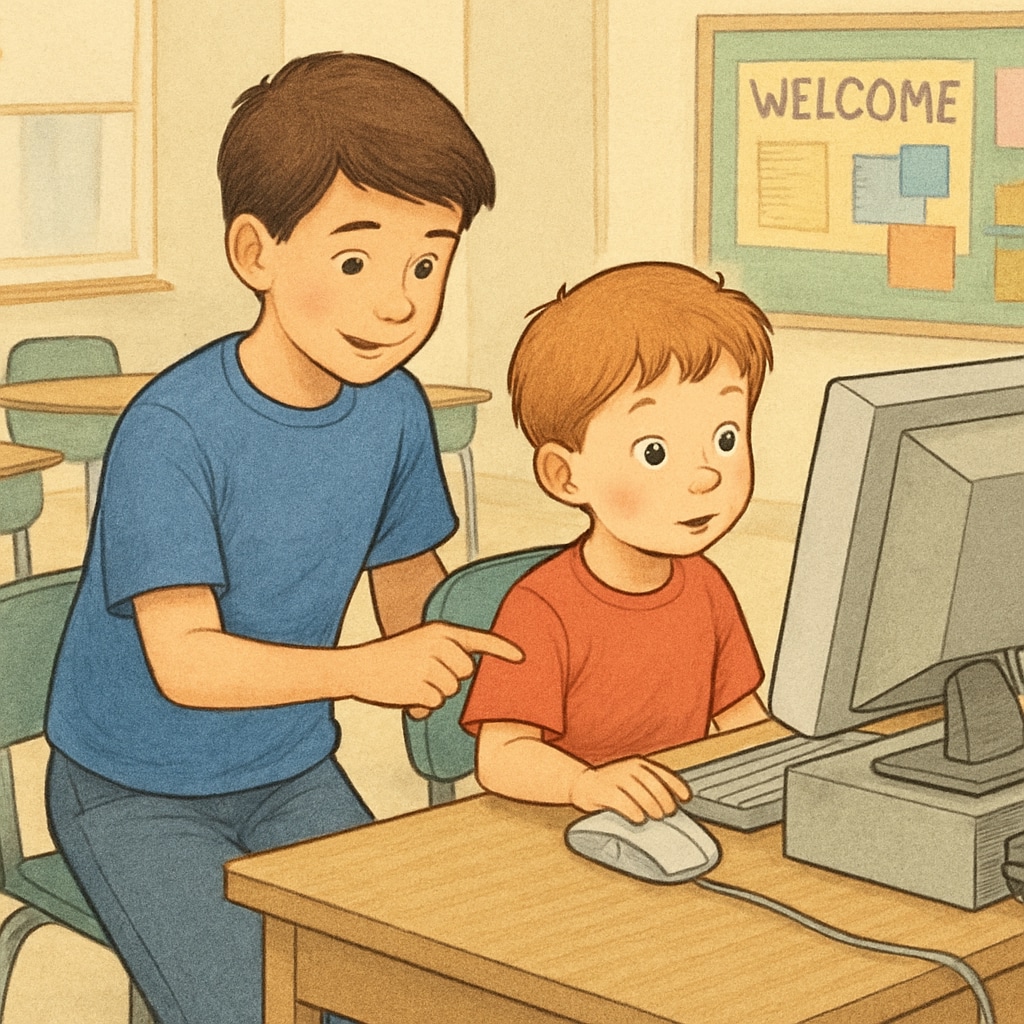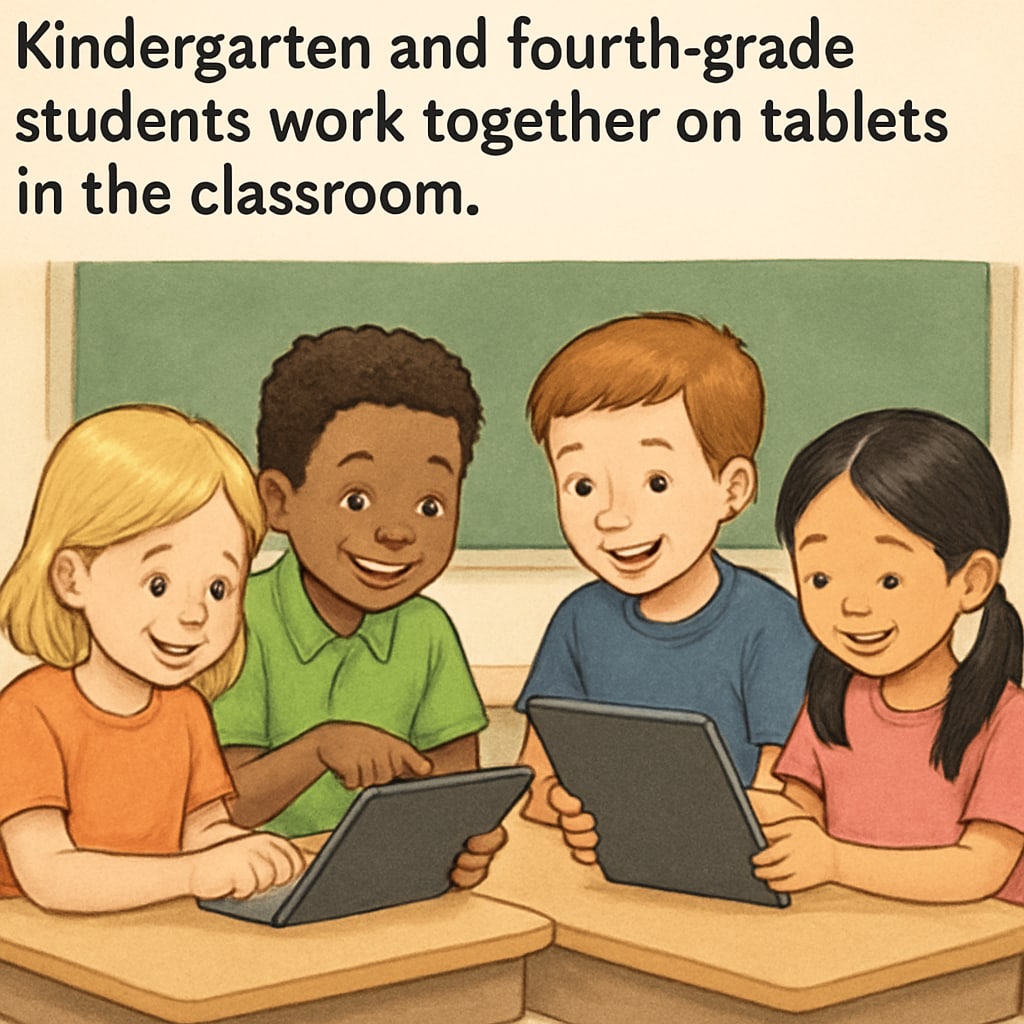Cross-age collaboration through kindergarten and fourth-grade partner projects opens up unique opportunities for learning and growth. This approach encourages younger and older students to interact, fostering empathy, teamwork, and critical thinking. By incorporating structured activities like computer-based tasks, educators can create meaningful experiences that benefit both groups. This article explores the educational value of cross-age collaboration and provides eight innovative project ideas, with a special focus on implementing structured computer activities effectively.
Why Cross-Age Collaboration Matters
Cross-age collaboration brings together students of different developmental stages, creating a symbiotic learning environment. Kindergarteners gain confidence and exposure to new skills, while fourth graders develop leadership and mentorship abilities. According to research, such programs enhance social-emotional learning and improve academic outcomes for both groups. For educators, this approach also provides a chance to bridge age gaps and build a stronger sense of community within schools.

Innovative Ideas for Kindergarten and Fourth-Grade Partner Projects
To make cross-age collaboration successful, educators need engaging activities that align with the developmental needs of both age groups. Here are eight highly effective project ideas:
- Storytelling Circle: Fourth graders assist kindergarteners in creating and illustrating their own stories, fostering creativity and literacy skills.
- Buddy Reading: Pair older students with younger ones for shared reading sessions to enhance comprehension and listening skills.
- Art Collaboration: Teams work together on murals or crafts, encouraging teamwork and artistic expression.
- Gardening Project: Partner up to plant flowers or vegetables, teaching responsibility and environmental awareness.
- Physical Activities: Organize simple games like relay races or obstacle courses to develop motor skills and teamwork.
- Structured Computer Activities: Use educational software where fourth graders guide kindergarteners in problem-solving tasks.
- Music and Dance Sessions: Create a song or dance routine as a group, fostering creativity and coordination.
- Science Experiments: Perform simple experiments together, sparking curiosity and a love for STEM subjects.
Focusing on Structured Computer Activities
One of the most effective ways to integrate technology into cross-age collaboration is through structured computer activities. These projects leverage educational software and games to teach problem-solving, logic, and digital literacy. For example, fourth graders can guide kindergarteners through age-appropriate coding programs or interactive math games. This not only strengthens technical skills but also deepens their bond as teammates.
To implement computer activities successfully, consider the following tips:
- Select Appropriate Software: Choose tools that cater to both age groups, such as ScratchJr, ABCmouse, or Tynker.
- Set Clear Goals: Define specific tasks for each session, such as completing a puzzle or designing a digital story.
- Encourage Collaboration: Ensure older students explain steps and guide younger ones without taking over completely.
- Monitor Progress: Regularly assess how well students are engaging with the activity and adjust as needed.

Tips for Successful Implementation
To maximize the benefits of cross-age projects, educators should focus on preparation and communication. Here are some practical tips:
- Pair Thoughtfully: Match students based on personality, interests, or complementary skills to ensure compatibility.
- Provide Training: Offer guidance to fourth graders on how to mentor effectively, including patience and active listening.
- Set Expectations: Clearly outline roles and objectives for each project to minimize confusion.
- Celebrate Achievements: Acknowledge milestones and successes to motivate students and reinforce their efforts.
By fostering a supportive environment, educators can help students develop critical life skills while creating memorable experiences. Whether through storytelling, art, or computer activities, cross-age collaboration has the power to transform the classroom and build lasting connections.
Conclusion
Cross-age collaboration, including kindergarten and fourth-grade partner projects, offers immense educational value. Structured activities such as computer-based tasks provide an excellent platform for fostering teamwork, empathy, and skill development. By thoughtfully designing and implementing these programs, educators can create an enriching experience that benefits students of all ages. The magic of cross-age collaboration lies in its ability to connect students, nurture their potential, and inspire a lifelong love of learning.
Readability guidance: This article uses short paragraphs and lists to maintain clarity, with an average sentence length of 12–16 words. Transition words such as “however,” “in addition,” and “for example” are integrated throughout to improve flow.


